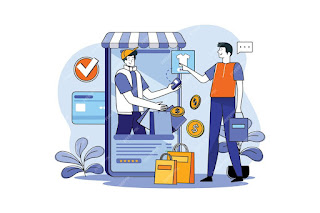How do you build a peer-to-peer marketplace platform, and how much does it cost?
Creating a peer-to-peer (P2P) marketplace platform involves several essential steps and considerations, spanning from conceptualization to execution. This undertaking not only requires a clear understanding of the platform's objectives but also demands a strategic approach to development, design, and deployment. Additionally, the cost estimation for such a venture is multifaceted and can vary significantly based on multiple factors. Let's delve into the detailed process of building a P2P marketplace and explore the diverse cost components associated with it.
Idea Conceptualization and Market Research
The inception of a successful P2P marketplace starts with a solid idea coupled with thorough market research. Identify the niche or industry for the marketplace, understand its target audience, and discern the specific needs or problems your platform aims to address. Comprehensive market research helps in outlining the features, functionalities, and unique selling points (USPs) essential for the platform's success.
Define Features and Functionality
Based on your research, outline the core features and functionalities required for the platform. This includes user profiles, listings or services, messaging systems, payment gateways, search and filter options, review and rating mechanisms, as well as organizational tools for managing users and content. Prioritize features based on their importance and relevance to your platform's objectives.
Choose the Right Technology Stack
Selecting the appropriate technology stack is crucial for the platform's performance, scalability, and security. Decisions regarding programming languages, frameworks, and infrastructure (such as servers, databases, and hosting) significantly impact the development process. Factors like scalability, security, and future updates should be considered while choosing the technology stack.
Development Phase
The development phase involves creating the platform's architecture, implementing features, and ensuring a seamless user experience. This phase typically includes frontend development (user interface), backend development (server-side reason, database management), integration of third-party services (like payment gateways), and testing for functionality, usability, and security.
Design and User Experience
An intuitive and visually appealing design is crucial for user engagement. Collaborate with designers to create a user interface (UI) and user experience (UX) that are easy to navigate, visually appealing, and aligned with the platform's branding. Ensure the design is responsive across various devices for a consistent user experience.
Testing and Quality Assurance
Thorough testing is essential to identify and rectify any bugs, errors, or usability issues before launching the platform. Quality assurance processes involve functional testing, compatibility testing across devices and browsers, security testing, and user acceptance testing (UAT) to ensure a seamless user experience.
Launch and Marketing
Upon successful testing, prepare for the platform launch. Implement a strategic marketing plan to reach your target audience, attract users, and encourage engagement. Utilize various marketing channels, such as social media, content marketing, SEO, influencer collaborations, and partnerships, to generate awareness and increase traffic to the platform.
Maintenance and Upgrades
Post-launch, ongoing maintenance is essential to address any issues, update features, and ensure the platform's smooth operation. Regular updates, security patches, and user feedback incorporation are crucial to staying competitive and meeting evolving user needs.
Cost Estimation:
Estimating the cost of building a P2P marketplace is complex and varies based on numerous factors, including:
Development Team: The size and expertise of the development team significantly impact costs. Hiring in-house developers or outsourcing to a development agency both come with different cost structures.
Features and Complexity: The complexity of features and functionalities directly influences development costs. Basic platforms cost less, while more complex ones with advanced features require higher investments.
Technology Stack: The choice of technology stack affects costs. Some technologies or platforms may have licensing fees or higher development expenses.
Design and User Experience: Quality design and UX/UI elements add to the cost.
Testing and Quality Assurance: Ensuring a robust, bug-free platform involves additional expenses for testing.
Marketing and Launch: Marketing costs for launching and promoting the platform are essential considerations.
Conclusion
To get an accurate cost projection, it's important to conduct a detailed analysis, outline specific requirements, and obtain quotes from developers or agencies.
Creating a successful P2P marketplace requires careful planning, strategic implementation, and financial investment. Each phase of development, from conceptualization to maintenance, should be meticulously considered to ensure the venture's success. Furthermore, the ability to adapt to market dynamics and overcome unpredictable challenges is crucial to maintaining a growing P2P marketplace platform.


Comments
Post a Comment